BAE Systems, Boeing and Saab have agreed a Letter of Intent to mount a joint bid for the Royal Air Force’s next fast-jet trainer, proposing a UK-assembled version of the T-7 as the core of a new, integrated training system.
The partnership aims to meet the requirement for a new Advanced Jet Trainer set out in the 2025 Strategic Defence Review and position the three firms to compete for future international training contracts.
The companies plan to deliver a live and synthetic training architecture built around the T-7’s modular mission systems and construct a UK-based production line under BAE Systems’ lead. The work would expand domestic supply-chain participation and create skilled jobs if selected.
Simon Barnes, who leads BAE’s Air sector, said the consortium would offer “a compelling offer to the UK Royal Air Force and our global customers” and argued that it would deliver both combat-air readiness and economic value.
Boeing set out the broader intent behind the arrangement. Bernd Peters, vice president for business development at its defence division, said the collaboration strengthens the transatlantic industrial base and would prepare RAF pilots for modern and future fighters. Saab echoed that view.
“The strong partnership between Boeing and Saab developed the T-7 to be the world’s best solution for future pilot training. By working with BAE Systems, Saab believes the UK can gain a worthy successor to the Hawk that is the right choice for pilots for decades to come,” said Saab’s head of business area Aeronautics Lars Tossman.
At the heart of the proposed system is the T-7A Red Hawk, chosen by the US Air Force as its next-generation pilot-training aircraft.
The platform, say the firms, combines a digital design approach with an integrated live, virtual and constructive training environment intended to prepare aircrew for fourth-, fifth- and sixth-generation combat aircraft.


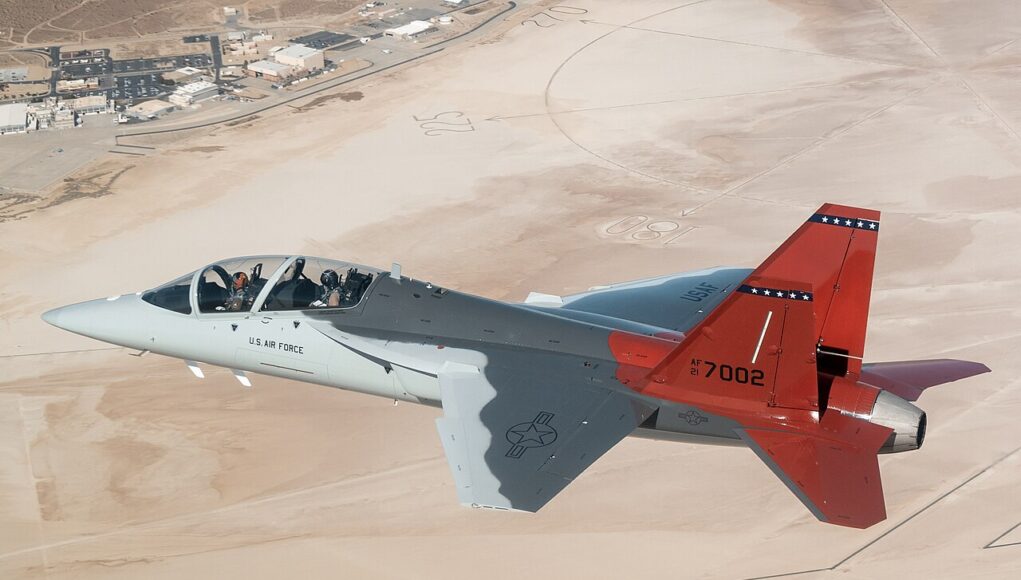
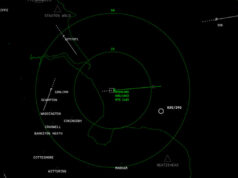
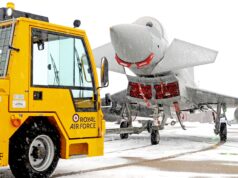
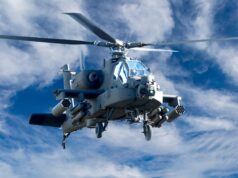
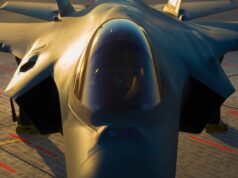
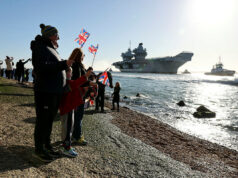

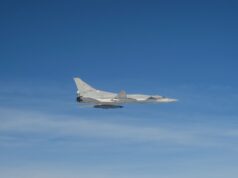
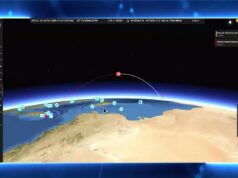


On a like for like basis, there would be @40 aircraft possibly ordered to replace todays Red Arrows and T2’s.
“On a like for like basis” – a naivety living up to the name!
I wrote it as that is the figure currently quoted.
My normal sarcasm was absent but the comment was open to thought interpretation. 😉
That’s what you get for being serious mate.💥
yes, it’s my own fault, That’s twice today !!!
Who cares whether it’s 30 or 40 or shmorty. The important thing is, we’re going to have ‘a live and synthetic training architecture’.
Who are you asking that question ?
Anyone who’s interested. I’ve reached that point in life where usually no one takes any notice of what I say. So thank you for doing so.
Oh, well you are not alone there !
Should get a decision on this real soon, most likely January 2039. This can will be kicked down the road like every other one you wait and see.
Not sure what the point in setting a production line up for 30-40 aircraft is, unless we are gauranteed assembly for some other European/ME sales.
Got to fill that Typhoon/Tempest gap somehow I guess.
I’d avoid anything that Boeings been involved with. I thought Aeralis was preferred or has that now been dropped?
Aeralis is still a paper plane.
Paper planes are all we can afford.
The Hawkbwas a paper plane once!
T-7 actually exists and is flying,albeit with some issues,Aeralis has yet to fly off the Drawing Board,personally i would go South Korean or Italian for a new Trainer.The MOD seems keen on Aeralis for some reason.
What about Aero L39 Skyfox or the Alenia M-346 Master much further along in development?
The 346 is Italian.
With roots tracing back to Russian Yak-130s. Oh well, I can see it being a trainer for the RAF, I can also see Aerialis being chosen by some Nationalistic pride thing… All British built, which is nice, but we’re really pushing the end of the line for these Hawk jets.
Meh, M-346’s would work, but no input on the design of it, but readily available and we can jump on the Italians for expertise and training.
Sadly, I don’t think Aeralis has even made its first test flight, and the T-7 is flying but not without its own problems. I’m also not sure who else has been tendered. I know it will be assembled by BAE, but I still don’t want more American products. I’m sure our PM will bend the knee to Trump on this.
Hmm let’s hope he isn’t Bubba eh. Though thinking about it it would be the other way around.
I would prefer the Italian option. The M-346 will be in use by the Italians and probably by the Japanese, and having a unified training system going into the operation of the Tempest would be big in streamlining upgrades.
I know Aeralis have some pull as a UK-based company, but I struggle to see how the UK could then support the production line after the limited run ends.
Qatar could most likely purchase Aeralis because Barzan Holdings is an investor in Aeralis. There was also news that they had already set up Aerlias France, which signed signed 2023 a MOU with the company as a potential replacement for the AlphaJet, and there was mention of a French training company as well. Aerialis has also partnered with Babcock France to help deliver this to the French MOD. But, this won’t happen, because if it isn’t Dassault, they won’t buy. But, hey, this is all paper at the moment.
Aerlias has been signing up all over the place but still hasn’t actually built anything. Don’t see that changing at this stage.
Yeah, we keep hearing about a test flight, but it ends up being pushed. I’ve read it’s now 2026. They say they have a demonstrator, but until we see it take off, it’s just a paper plane. .
Bit odd that the GCAP already is in production, but there’s nothing physical for Aerialis’s offering. Oh well.
I’m not sure, Red Hawk seems like a decent jet a LOT newer than M346 and my quick google hasn’t revealed any glaring project management issues. BAE, Boeing and SAAB between them ought to be able to manage in-country production; they own enough components companies here between them to produce complete aircraft.
M346 is also a good option though, it has similar performance (though with twin-engine complexity) and the GCAP links are very useful if Leonardo can keep the cockpit and avionics up to date.
Boeing haven’t been able to deliver T7s to the USAF, General Electric seem to be struggling to produce the F404 engine in numbers. I can’t see this being anything but a terrible idea.
At the same time Aerilas were suppose to have a flying prototype this year which didn’t happen. Realistically that leaves the Leonardo M345 and M346.
Maybe going with a Tempest partner might be a good thing.
The next Ajax? We don’t make the engine, the avionics?so get a bit of air structure work, assembly and test. No Design authority or skills. Any weapon integration will be reliant on the US for which will mean any British European weapons will be excessively expensive to be integrated and any weapons will be US. All in all bad plan
Its a training aircraft, there are no weapons
Could a 2 seat Gripen do the job? Could use the them offensively in wartime if required also.
Two expensive and complex. And its not a fast jet trainer.
So many choices in this market segment.. personally considering the likely future of drone incursions and in a wartime situation the possibility of long range drones I think an option that can support as a second line drone interceptor would be good the future of air dominance is no longer just high end it’s also low end attrition and any opportunity needs to be taken to strengthen in both high and low end.
Totally agree, Ukraine’s experience suggests that we need lots of these and having lots will allow pilot numbers to expand quickly.
I would love Aeralis to be in the frame, but with a flying demonstrator years away, they are surely too risky a long shot. Sadly T-7 or the M345 / M346 seem the best options. But can someone please explain why BAE Systems didn’t develop a successor to the Hawk T.2? Offering a new state-of-the-art advanced trainer was an “open goal” for them c.2010 – and didn’t require a potentially company breaking investment. At that time they had everything in place from the design team to the production facilities.
I think the main issue was that the MoD didn’t give BAe the requirement to design a replacement and have now probably left it too late.
Despite being asked about this many times BAE kept talking about synthetic traning environments (simulators). My guess is that profits were/are higher for developing these that actual planes.
TWZ has an in-depth look at the offer of the T-7A Red Hawk trainer to replace the T1s and T2s currently in service with the RAF.
IRRC Hawker Siddeley launched development of the Hawk in the late 1960’s as a company funded project, correctly identifying that the RAF would soon need a replacement for the Gnat. The plane has since been a goldmine for BAE after taking over HS – they claim over 1000 aircraft sold. So why didn’t they start a replacement project c.2010 when it became clear that the Hawk was at the end its development potential? My guess is that they were foolishly demanding that the MOD fully funded this, well before the RAF was interested in a replacement given that its T.2s were brand new. BAE Systems aversion to any risk perhaps reached a peak when it crazily sold its 20% stake in Airbus in 2006, rather than continue to partially fund development of the A380 and A350.
BAE are a disgrace, they have presided over the destruction of our aerospace industry. They don’t take any risks, they don’t invest in anything other than existing cash-cows, which they then pump dry. From the base the Hawk gave them they should be offering the world a new FJT, not the Turks, Italians and South Koreans.
Makes my blood boil!
Private sector enterprise!
At the end of the day BAE are not a Charity, they exist to make money. They would have needed some concrete assurances from the MOD/Govt of future orders to start development of a new Trainer.
It’s a private company and they don’t want to take risk but then they will miss out on world wide sales. They can’t rely on small Ministry of defence orders. Harrier had little government support at the beginning as I understand and really its potential only accepted after the Falklands.
Most private enterprises assess the market opportunities and undertake calculated risks, whereas BAE won’t get off their corporate arse unless they’re given a cast-iron tax-payer underwritten guarantee. They may as well be nationalized.
A number of our aerospace industry’s biggest successes came when BAE’s predecessors took the risk and developed aircraft off their own bat.
How are you ever nationalising BAE
Why would BAE be particularly difficult to nationalize?
Because they’re a massive company and it would throw them into turmoil if part of the company is nationalised, don’t forget BAE has more holdings outside of the UK than in it these days
Many “massive companies” have been nationalized in the past, in the UK and other countries, and given all the American holdings are in a separate entity with its own Board and managed very much at arms length there’s no reason that can’t simply be floated separately.
Perhaps we would end up with a smaller but UK focused defence company rather than an international holding company.
Forget Boing Boing. Buy Italian or Korean.
My view? The Ajax of the Aerospace industry. US design authority, US engine, US ejection seat, US systems and avionics. Minimal work package after Hawk led the world. Trojan horse to lose any design control and be entirely reliant on US. Expect to Union flag 🇬🇧 painted on it ! The reality will be the initial bid will be priced attractively, however once contracted and a weapon needs integrating or a change is required the costs will rocket.
Nett result a disaster for British industry no control of project or destiny.
No strategy or Defence industrial plan ….. again!
I have no idea of the reletive merits of any of the trainers being put forward. One of curious genre of comments on in this forum is the “oh well that aircraft had a lot of development troubles. we’d be better off with Hawker Hunters”. The Hunter was a fantastic aircraft and had surprisingly low fatalities during its development (perhaps 2 pilots killed). But it depended on its predecessor the P1081 which killed its test pilot. By one estimate during the 50’s one test pilot was killed every week worldwide … So many aircraft that went on to be great had difficult starts…. the Comet being a great example. The current new designs are not just more of the same (like the Herc) but very new concepts… no wonder there are problems. There always were and always will be. Problems in development are normal and I’d be suspicious of any aeroplane that didn’t have any! Happily no Herc crashed in development but it had problems with propeller pitch control, low speed handing difficulties and asymmetric flying control problems that could result in loss of control… so there you go.
There would not have been enlugh aircraft to order to get a BAE Hawk replacement off the ground. IN the 70s we ordreed 175 today that would be 48 at most and the government would order in small batches. So not viable as a stand alone product despite that around 1,000 Hawks need replacing.
why buy more US is even n consideration? there is Aeralis a UK company proposing a modular trainer jet, then there are the Italian and Czech trainer jets which are both in service
Nuts.
How did we go from designing and building one of the most successful jet trainers ever to buying foreign. If we were talking frigates there would be uproar if mentioned buying foreign was even whispered.